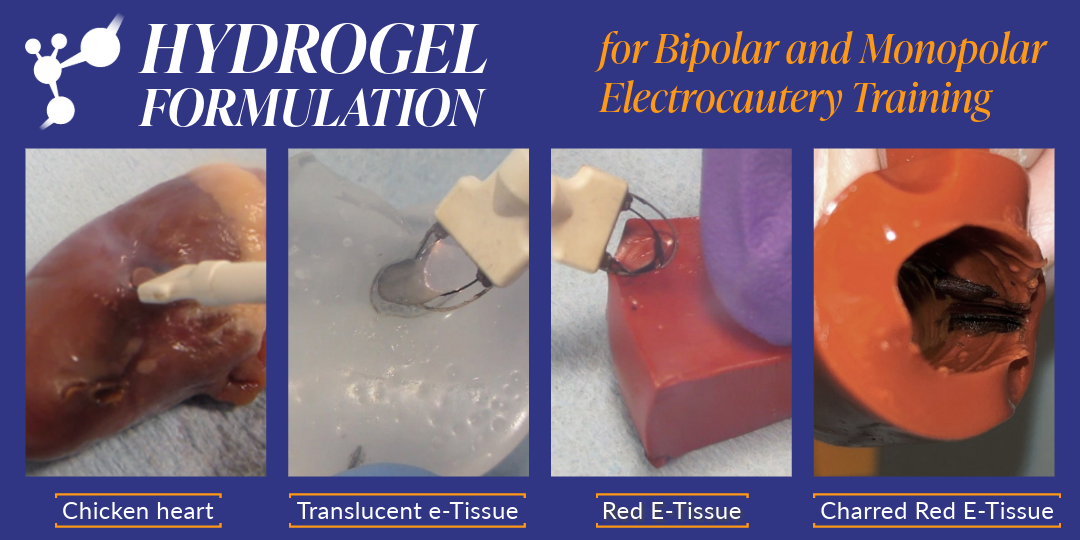Improving Surgical Training with Custom Hydrogel Models

At Cambridge Polymer Group, we are constantly pushing the boundaries of polymer science to develop innovative solutions for our clients. Our recent advancement in hydrogel technology aims to enhance surgical training by offering realistic tissue phantoms that more closely mimic the behavior of human tissue during electrosurgical procedures.
The Challenge: Realistic Tissue Simulation
As the medical device industry moves away from animal and cadaveric testing, there is a growing need for synthetic tissue models that can replicate the nuanced responses of human organs. While many commercially available phantoms may look realistic, they often fall short in simulating crucial aspects of tissue behavior during surgical interventions.
One of our clients approached us with a specific challenge: developing a synthetic tissue phantom that could char and smoke realistically during electrosurgical procedures, just like natural tissue. This behavior is critical for effective surgical training, especially when using high-energy intervention devices like electrocautery or radiofrequency ablation tools.
Our Solution: The "e-tissue" Hydrogel
Drawing inspiration from the Maillard reaction, the chemical process responsible for food browning, Research Scientist Joseph White and his CPG team developed a novel "e-tissue" hydrogel formulation. This innovative material not only provides a realistic tactile feel but also responds to electrical energy in a manner consistent with natural tissue.
Key features of our e-tissue hydrogel:
- Chars and produces smoke under bipolar and monopolar electrosurgical intervention
- Cuts realistically during electrosurgical procedures
- Offers appropriate electrical conductivity and thermal decomposition properties
- Provides a tactile feel similar to natural tissue
Putting e-tissue to the Test
To demonstrate the effectiveness of our e-tissue hydrogel, we conducted comparative tests using chicken heart tissue (a common surrogate for human tissue in surgical training) and our synthetic models. The results were notable:
- Both translucent and red-colored e-tissue options produced char and smoke during bipolar electrocautery, closely mimicking the behavior of the chicken heart tissue.
- When cast into specific anatomical shapes (such as a papilla), the e-tissue model charred and smoked realistically under monopolar electrocautery during simulated sphincterotomy training.
Implications for Surgical Training and Medical Device Development
Our e-tissue hydrogel opens new possibilities for surgical training and medical device testing:
- Enhanced realism: Trainees can experience tissue responses that closely match real-life scenarios, improving the quality of their training.
- Ethical considerations: Reduced reliance on animal and cadaveric tissue for training and testing.
- Consistency and repeatability: Unlike natural tissue with its short shelf life, our synthetic models offer stable and consistent properties for repeated use.
- Customization potential: The hydrogel can be tailored to mimic specific tissue types or anatomical structures.
The Future of Synthetic Tissue Models
At Cambridge Polymer Group, we are committed to advancing the field of synthetic tissue modeling. Our expertise in hydrogel chemistry, materials science, and custom test design positions us uniquely to develop application-specific tissue phantoms for a wide range of medical applications.
Whether you are looking to create surgical training tools, test beds for new medical devices, or marketing demonstrators, our team is ready to help you bring your vision to life. Contact us today to learn more about how our custom tissue model services can benefit your organization.